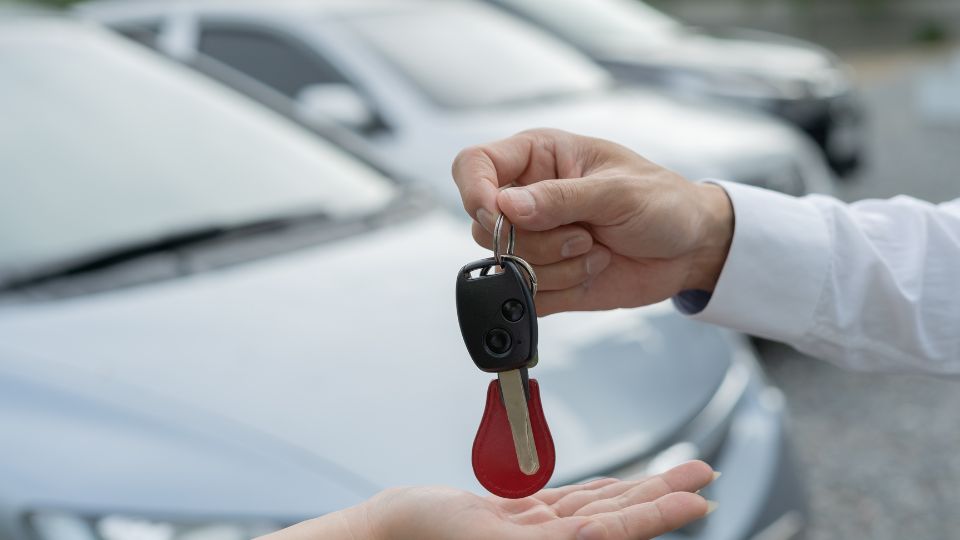The auto loan crisis and its ripple effects unveil a detailed insight into how it’s affecting drivers, lenders, and the automotive industry at large.
The auto loan crisis in 2024 highlights a pressing concern: tightening credit and soaring defaults that pose new challenges for car buyers and the finance sector. An unprecedented hike in interest rates has led to more expensive auto loans, impacting consumers with various credit histories.
Those with higher credit scores may still access loans, albeit at elevated costs, while those with lower scores are increasingly marginalized, struggling to afford the larger down payments now required.
As car prices continue to rise alongside interest rates, the gap between affordability and vehicle ownership widens. This financial strain is reflected in the uptick in auto loan defaults, a concerning trend that could herald broader economic instability.
The finance sector is reacting accordingly, with stricter credit approvals that mirror the caution after the initial economic downturn in 2020, making it more challenging for Americans to secure financing for vehicle purchases.
Key Takeaways
- Interest rate hikes have increased loan expenses, affecting car affordability.
- Auto loan defaults are on the rise, signaling potential economic distress.
- The finance sector has tightened credit, altering the car buying landscape.
Studies Show Alarming Increase in Auto Loan Burdens
Amid the escalating Auto Loan Crisis, the financial burden of car ownership is highlighted by rising interest rates, surging insurance premiums, inflation, and fluctuating fuel prices.
A MarketWatch Guides survey of 1,000 U.S. drivers from last year reveals critical insights into this crisis. A staggering 58% of respondents reported fuel costs as their top financial strain, while 41% struggled with insurance premiums.
Most alarmingly, approximately 40% of drivers confess they’ve been unable to afford necessary car repair costs and upgrades, underscoring a critical aspect of the Auto Loan Crisis—the dire impact on maintaining vehicle safety and functionality. This issue is further exacerbated as nearly 16% of all surveyed drivers have had to delay essential maintenance, with the problem being significantly more acute among those who can’t afford their cars (75%) compared to those who can (23%).
To manage these financial pressures, drivers are making sacrifices in other areas of their lives, such as dining out (25%), vacations (17%), and social activities (12%), highlighting the pervasive effects of the Auto Loan Crisis on American car owners.
The Impact of Interest Rates on the Auto Loan Crisis
The cost of borrowing for auto loans is directly influenced by interest rate trends, with changes in Federal Reserve policies impacting how much buyers end up paying.
Federal Reserve Policy Changes
The Federal Reserve periodically adjusts benchmark interest rates to stabilize the economy. When they raise rates, it becomes more expensive for lenders to borrow money. In turn, lenders often increase the interest rates offered to consumers.
For auto loans, this means higher monthly payments and higher total borrowing costs for the borrowers. These policy changes affect not just new loans, but also existing variable-rate debts, placing additional financial pressure on consumers.
Interest Rate Trends and Auto Financing
As interest rates go up, the cost of financing a car increases for the average borrower. Here’s a snapshot of the situation:
- Interest Rates: A consistent upward trend in interest rates has been observed, which has led to escalating borrowing costs. These costs apply not just to auto loans but also to student loans, home loans, and credit card debt.
- Borrowers: People with excellent credit may still access loans at somewhat competitive rates, but those with lower credit scores face much steeper costs.
- Auto Loan Approvals: As higher interest rates endure, the criteria for loan approvals have tightened, reducing the pool of qualified applicants.
- Debt Impact: Existing debt becomes more burdensome as variable-rate auto loans adjust to reflect higher rates, affecting individual financial stability.
This trend of increasing interest rates can lead to a cycle of elevated rejections of auto loan applications, further signifying the need for prospective car buyers to carefully assess their financial situations before committing to new auto debts.
Auto Loan Delinquencies and Defaults
The current landscape of the auto loan market is increasingly challenging, with a significant rise in delinquencies and defaults. These issues predominantly affect subprime borrowers, further highlighting the risk factors associated with different credit score tiers.

Current State of Auto Loan Defaults
As of the end of 2023, the auto finance industry has witnessed an uptick in loan defaults. Data from S&P Global indicates a troubling rise in the percentage of auto loans resulting in defaults, particularly among younger borrowers.
Delinquency and default rates are important metrics for assessing the health of the credit market, with recent patterns showing a distressing trend.
- Delinquency Rates: The last quarter of 2023 saw about 3.1% of outstanding debt entering some stage of delinquency.
- Transition into Default: Transition rates, which track borrowers falling into a state of delinquency, have increased across the board, mutually concerning credit card and auto loan markets.
Noteworthy is the peak delinquency projection for 2024, with estimates from TransUnion and other credit bureaus suggesting potential rates hovering between 9% to 10%. These figures surpass pre-pandemic levels, underlining the weight of the current crisis.
Subprime Borrowers and the Risk of Delinquency
The rise in defaults and delinquencies is most pronounced among subprime borrowers—those with lower credit scores. These borrowers are more susceptible to economic shifts, particularly in a climate of heightened interest rates and inflated vehicle prices.
- Credit Scores Impact: Borrowers with lower credit scores, typically below 670, face higher interest rates on loans, which can lead to financial strain, increasing the likelihood of missing payments.
- Subprime Market Conditions: Subprime borrowers often deal with more stringent loan conditions, making them vulnerable to delinquency when economic circumstances become unfavorable.
Credit reporting agencies like TransUnion track this data closely, noting that there is a direct correlation between economic stressors and a surge in delinquency rates amongst this demographic.
Overall, while all classes of borrowers have shown a growing trend towards delinquency, the subprime market’s difficulties illustrate a heightened need for industry and regulatory attention to navigate the burgeoning auto loan crisis effectively.
Car Prices and Consumer Decisions
With an auto loan crisis unfolding in 2024, consumers are facing pivotal decisions as they navigate a market characterized by high car prices and limited loan accessibility. These market conditions are reshaping how buyers approach the new and used vehicle markets and influencing loan availability.
New vs. Used Vehicle Market Dynamics
Data shows a marked separation between the new and used vehicle sectors. New vehicles have seen a steep increase in prices due to a combination of factors, such as supply chain disruptions and increased manufacturing costs. This surge has redirected a portion of consumer spending towards the used car market, which traditionally offers more affordable options.
However, the used vehicle market is not immune to price increases. According to Cox Automotive, there’s also been an upward trend in used car values, although it typically lags behind the new car market. Despite higher prices, used vehicles remain a vital segment for those unable to afford the premiums of new models.
Influence of Car Prices on Auto Loan Accessibility
It has become increasingly evident that car prices wield a significant influence over auto loan accessibility. Higher auto prices translate into larger loan amounts, which, combined with rising interest rates, result in less affordable monthly payments for many consumers.
Financial institutions, in response to the heightened risk, have bolstered their lending criteria—effectively narrowing the pool of qualified borrowers. Consequently, those with weaker credit profiles find themselves particularly disadvantaged in securing financing, pushing some buyers out of the market entirely.
The loan terms, too, have adapted, with longer durations becoming more common in an effort to manage monthly expenses. However, these longer-term loans can lead to a situation where borrowers owe more than the value of their vehicles, creating further financial strains.
Auto Loan Crisis: Market Reactions and Predictions
The auto loan crisis of 2024 is creating ripples through markets and impacting stakeholders across the board. Tighter credit conditions and the threat of defaults are eliciting significant responses from the auto industry and reshaping forecasts for auto financing.
Auto Industry Response to Economic Changes
The auto industry’s reaction to the auto loan crisis is pivotal in the wake of rising loan delinquencies. Manufacturers and dealerships are strategizing to mitigate financial risks while supporting sales. They have increased promotional financial offerings and have begun partnering with tech companies to develop more sophisticated risk assessment tools.
These initiatives aim to balance sustaining consumer demand with the need for a more cautious lending approach.
Measures taken:
- Promotions: Lower interest — for qualifying consumers — and longer loan terms.
- Partnerships with Tech: Implementation of advanced analytics to better evaluate loan applicant risk profiles.
Forecasting the Future of Auto Financing
Analysts are closely watching the trends to predict the future landscape of auto financing. With the Federal Reserve’s interest rate hikes, the cost of borrowing is expected to remain high. This, coupled with persistent market volatility, suggests a cautious approach from lenders.
Key Predictions:
- Interest Rates: Likely to stabilize at elevated levels, maintaining the high cost of borrowing.
- Loan Access: Stricter lending criteria could prevail, with lenders being selective in approving auto loans, particularly affecting subprime borrowers.
- Government Measures: Possible discussions of stimulus or intervention to prevent a credit tightening spiral that could dampen economic recovery.
The auto industry and financial markets remain adaptive to these evolving economic challenges as they forecast and navigate the future of auto financing. We have been through similar incidents in the past and the hope is that we will get past the current auto loan crisis.





